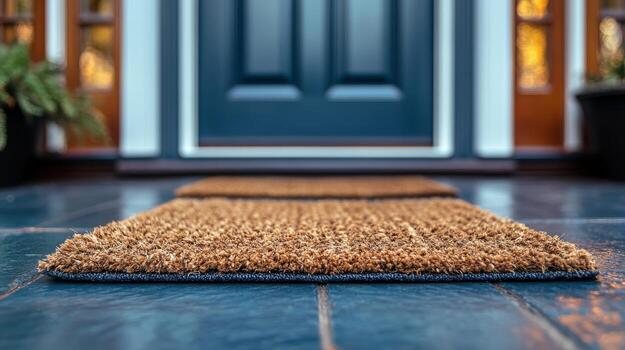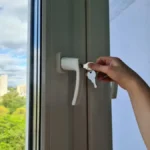When people search for matting on floor, they’re usually looking for something simple: clarity about what floor matting truly means, what kinds exist, and why it matters. Yet behind that seemingly ordinary surface lies a deep world of design, safety, and psychology. Floor matting is far more than just a decorative layer or a cleaning necessity it’s a quiet, functional guardian that shapes how we move, work, and live within our spaces. let’s make it clear: matting on floors refers to protective or decorative coverings placed over surfaces to enhance comfort, safety, aesthetics, and performance. These can range from soft home mats that absorb noise to heavy-duty industrial matting that resists chemicals and reduces fatigue. Matting defines how spaces feel and function it safeguards the floor, cushions our steps, prevents slips, and even regulates indoor air quality. The story of floor matting is a story of material evolution, design philosophy, and human behavior how something so ordinary became indispensable to modern architecture and daily life.
Floor Matting and Their Common Applications
| Type of Floor Matting | Primary Material | Main Purpose | Common Environments | Key Benefits |
|---|---|---|---|---|
| Entrance Mats | Rubber, Coir, Nylon | Trap dirt and moisture | Homes, Offices, Malls | Cleanliness, Safety |
| Anti-Fatigue Mats | Rubber, Foam, PVC | Reduce strain from standing | Factories, Kitchens | Comfort, Productivity |
| Gym Mats | EVA Foam, Rubber | Shock absorption | Gyms, Sports halls | Injury prevention |
| Industrial Mats | Vinyl, Nitrile Rubber | Chemical & oil resistance | Workshops, Labs | Durability, Safety |
| Decorative Mats | Wool, Jute, Polyester | Enhance aesthetics | Homes, Hotels | Design appeal |
| Electrical Insulating Mats | Rubber composite | Protect from electrical hazards | Power stations, Panels | Safety compliance |
| Bathroom Mats | Cotton, Microfiber | Absorb moisture | Bathrooms | Hygiene, Slip prevention |
Why Floor Matting Matters
Walk into any modern home, gym, office, or hotel lobby, and your first physical interaction with the space happens under your feet. The texture, warmth, and firmness of the floor define the tone of your experience. Floor matting, often unnoticed, is one of the most important functional layers in interior design. It is both aesthetic and practical, bridging design with safety. Matting does more than keep floors clean it protects surfaces from wear, absorbs impact, and creates zones of purpose. In workplaces, the right matting can improve productivity and reduce fatigue. In homes, it enhances comfort, muffles sound, and complements furniture. And in public areas, it provides safety by reducing slips and falls.
From woven coconut fibers to precision-engineered synthetic materials, floor matting has evolved into a sophisticated blend of craft, technology, and psychology reflecting our changing lifestyles and design sensibilities.
Overview: From Straw Weaves to Smart Surfaces
Floor matting has ancient roots. In early civilizations, mats were woven from reeds, straw, or animal hides, serving as primitive flooring, insulation, and seating. In Japan, tatami mats became cultural icons, symbolizing purity and order. Similarly, African and Middle Eastern homes used palm and jute weaves for comfort in hot climates. The Industrial Revolution brought new materials rubber and vinyl that transformed matting into a functional product for factories and public spaces. As societies urbanized, the purpose of mats expanded beyond comfort to include hygiene, design, and safety. Today, smart matting systems can track foot traffic, absorb vibrations, and even harvest kinetic energy. What began as simple ground covering has become a reflection of technological and cultural progress.
The Science Behind Floor Matting
Modern matting is engineered with ergonomics and physics in mind. For example, anti-fatigue mats are designed to stimulate micro-movements in leg muscles, improving circulation for workers who stand long hours. Entrance mats use multi-layered fibers that trap up to 80% of dirt and moisture before it enters a building, protecting indoor air quality. The science involves material composition, friction control, and impact absorption. Factors like density, elasticity, and surface texture determine a mat’s performance. Anti-slip mats, for instance, must maintain friction even when wet, while gym mats focus on energy dispersion during falls or high-impact movements. Behind every mat is an intricate balance of comfort, resilience, and safety engineered to adapt to the demands of modern environments.
Material Properties and Performance in Floor Matting
| Material | Elasticity | Durability | Water Resistance | Slip Resistance | Comfort Level |
|---|---|---|---|---|---|
| Rubber | High | Very High | Excellent | Excellent | Good |
| Vinyl | Moderate | High | Excellent | Good | Fair |
| Foam | Very High | Moderate | Fair | Good | Excellent |
| Coir (Natural Fiber) | Low | Moderate | Moderate | Good | Fair |
| Carpet Fiber (Nylon/Wool) | Moderate | High | Moderate | Fair | Excellent |
| Microfiber | Low | Moderate | High | Excellent | Very Good |
Matting for Safety and Performance
Safety is one of the primary drivers behind the evolution of floor matting. According to global workplace studies, a significant number of injuries stem from slips, trips, and falls. Floor mats serve as the first line of defense, providing traction and absorption in high-risk zones such as kitchens, bathrooms, and industrial floors.
- Entrance Matting Systems keep interior spaces dry by absorbing water and dust.
- Electrical Insulating Mats safeguard workers from electrocution in power plants.
- Anti-Fatigue Mats reduce musculoskeletal strain for employees in standing jobs.
Every mat, in essence, is a specialized tool designed to protect both people and property.
Floor Matting in Home Environments
In residential design, matting has shifted from being purely functional to being a statement of style. The living room rug or hallway runner defines not just a zone but also a mood. Materials like wool, sisal, and jute bring warmth, while synthetic fibers ensure durability and easy cleaning.In kitchens, rubber-backed mats prevent slips while offering cushioned comfort. Bathrooms feature quick-drying microfiber mats, and bedrooms often use plush carpets for insulation and coziness.Modern homeowners now view matting as part of the overall aesthetic palette, integrating texture, color, and material choice to align with interior themes from Scandinavian minimalism to bohemian luxury.
Matting in Commercial and Industrial Spaces
In commercial environments, floor matting is about efficiency and safety. Factories employ anti-fatigue mats to keep workers comfortable during long shifts, while laboratories use chemical-resistant mats to withstand spills.Corporate lobbies and malls install custom logo mats that combine branding with functionality. Hotels prefer decorative carpets with acoustic benefits, and airports rely on high-traffic matting engineered for endurance.Each mat type reflects its context a deliberate decision rooted in performance, branding, and comfort.
Using Floor Matting and Their Objectives
| Sector | Matting Purpose | Preferred Material | Expected Outcome |
|---|---|---|---|
| Manufacturing | Worker comfort, safety | Rubber, Vinyl | Reduce fatigue, prevent accidents |
| Hospitality | Aesthetic, acoustics | Wool, Nylon | Enhance ambiance |
| Healthcare | Hygiene, anti-slip | PVC, Nitrile Rubber | Prevent contamination |
| Education | Noise control | Foam, Carpet | Comfort and sound absorption |
| Transportation | Durability, anti-static | Rubber | Safety and longevity |
The Role of Design and Texture
Matting design has evolved from plain, utilitarian sheets to sophisticated architectural elements. Textures, patterns, and colors are now integral to matting selection, influencing spatial psychology. Smooth surfaces convey modern minimalism, while ribbed textures signal durability and grip. Architects often use matting to define transitions from outdoors to indoors, or between functional zones within a space. For instance, an office may use a softer mat in the lounge but a high-density mat near the entrance. Design, therefore, is not just aesthetic but functional zoning through tactile expression.
The Environmental Perspective
Sustainability is transforming the matting industry. Manufacturers are embracing recycled rubber, organic jute, and biodegradable composites. Post-consumer waste such as old tires and plastic bottles is being reimagined as durable, stylish mats.Eco-conscious buildings prefer matting systems certified under LEED (Leadership in Energy and Environmental Design) or GreenGuard standards, which ensure low emissions and sustainable sourcing. The new generation of mats doesn’t just protect floors it protects the planet.
Technological Innovations: Smart Matting Systems
The fusion of technology and flooring is reshaping how we think about matting. Smart mats can detect foot pressure, weight distribution, and movement patterns, offering data insights for health, retail, and safety. In industrial setups, sensor-embedded mats can detect falls or track employee ergonomics. In healthcare, pressure-sensitive mats alert caregivers to patient movement. Smart home systems now integrate floor sensors that trigger lights or alarms upon contact. This convergence of AI, material science, and design redefines matting as a living surface, responsive to its environment and its user.
Matting and Human Behavior: The Psychology of Surfaces
We seldom realize how deeply flooring affects our behavior. Studies show that texture influences emotion and posture. Soft mats induce relaxation, while firm textures promote alertness. Warm-colored mats enhance social comfort, while dark, matte surfaces evoke calmness. Retail stores use matting strategically to slow foot traffic and enhance browsing. Workplaces employ it to minimize fatigue and boost focus. Even the way a mat feels underfoot shapes subconscious comfort, creating a deeper connection between design and psychology.
Matting and Health
The health implications of matting are often underestimated. Anti-fatigue mats improve circulatory health for workers who stand all day. Non-toxic materials reduce indoor pollutants, and slip-resistant designs prevent injuries.nFurthermore, mats with antimicrobial coatings are now common in healthcare and food industries, helping maintain hygienic conditions. The right mat, in essence, is a preventive health tool woven into the architecture of daily living.
Future of Floor Matting
Looking ahead, floor matting is heading toward modularity, intelligence, and sustainability. The mats of the future may be self-cleaning, self-charging, or even energy-generating, using footstep motion to power low-voltage systems. 3D printing will enable custom designs and ergonomically optimized textures. Integration with smart home systems will make mats interactive responding to temperature, humidity, and motion. What was once merely a layer of fabric or rubber is fast becoming a dynamic interface between humans and their built environment.
Table: Future Trends in Floor Matting
| Trend | Description | Potential Impact |
|---|---|---|
| Smart Mats | Embedded with sensors and connectivity | Health monitoring, automation |
| Eco-Mats | Made from recycled and organic materials | Sustainability |
| Modular Systems | Interchangeable parts for custom design | Flexibility and aesthetics |
| Self-Cleaning Mats | Antimicrobial, dust-repelling coatings | Hygiene and maintenance |
| Energy-Generating Mats | Harvest kinetic energy | Renewable power source |
Conclusion: The Ground We Stand On
To understand matting on floors is to understand how humans interact with space. It’s not merely what we walk on it’s what supports us, protects us, and reflects our culture and technology. From handcrafted jute weaves to AI-driven smart mats, every layer of matting tells a story of evolution and design intelligence. As we enter an age of sustainability and sensorial architecture, matting will no longer remain invisible. It will stand as a symbol of thoughtful design — where comfort, beauty, and innovation meet beneath our feet.
FAQs
1. What is the main purpose of matting on floors?
Matting protects floors, prevents slips, enhances comfort, and adds decorative value. It also supports hygiene and durability in daily use.
2. Which materials are best for durable floor matting?
Rubber, vinyl, and high-density foam are preferred for durability, resilience, and easy maintenance, especially in high-traffic areas.
3. How does matting improve workplace safety?
Specialized mats prevent slips, provide insulation, and reduce fatigue for employees who stand long hours in factories or retail spaces.
4. Are eco-friendly mats as durable as synthetic ones?
Yes. Modern eco-friendly mats made from recycled rubber or natural fibers can match or exceed synthetic durability with proper care.











